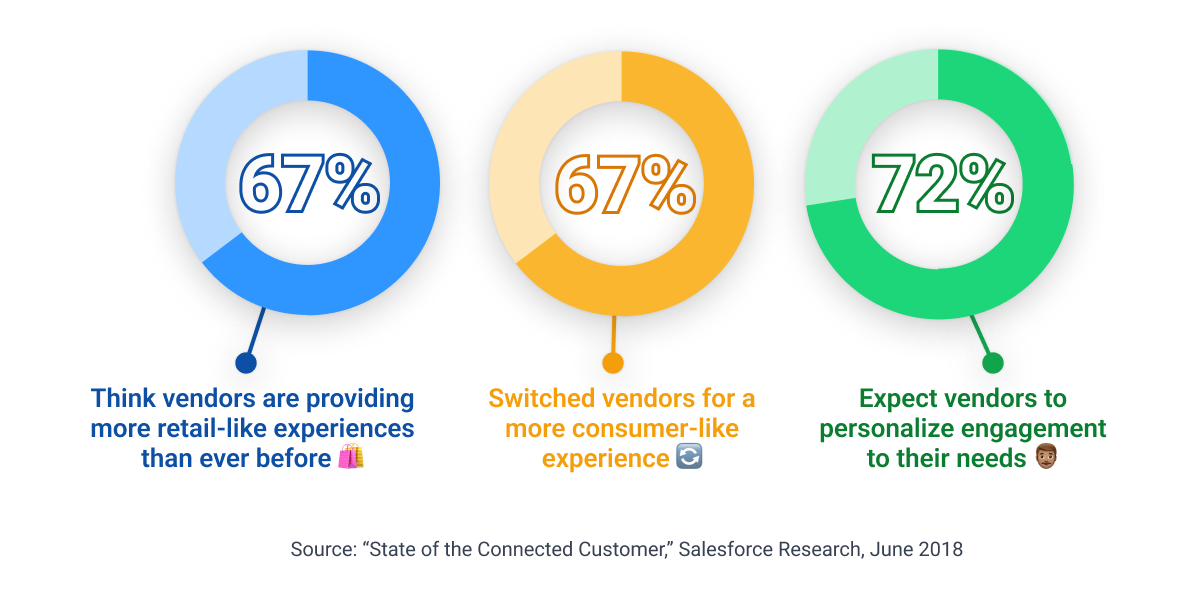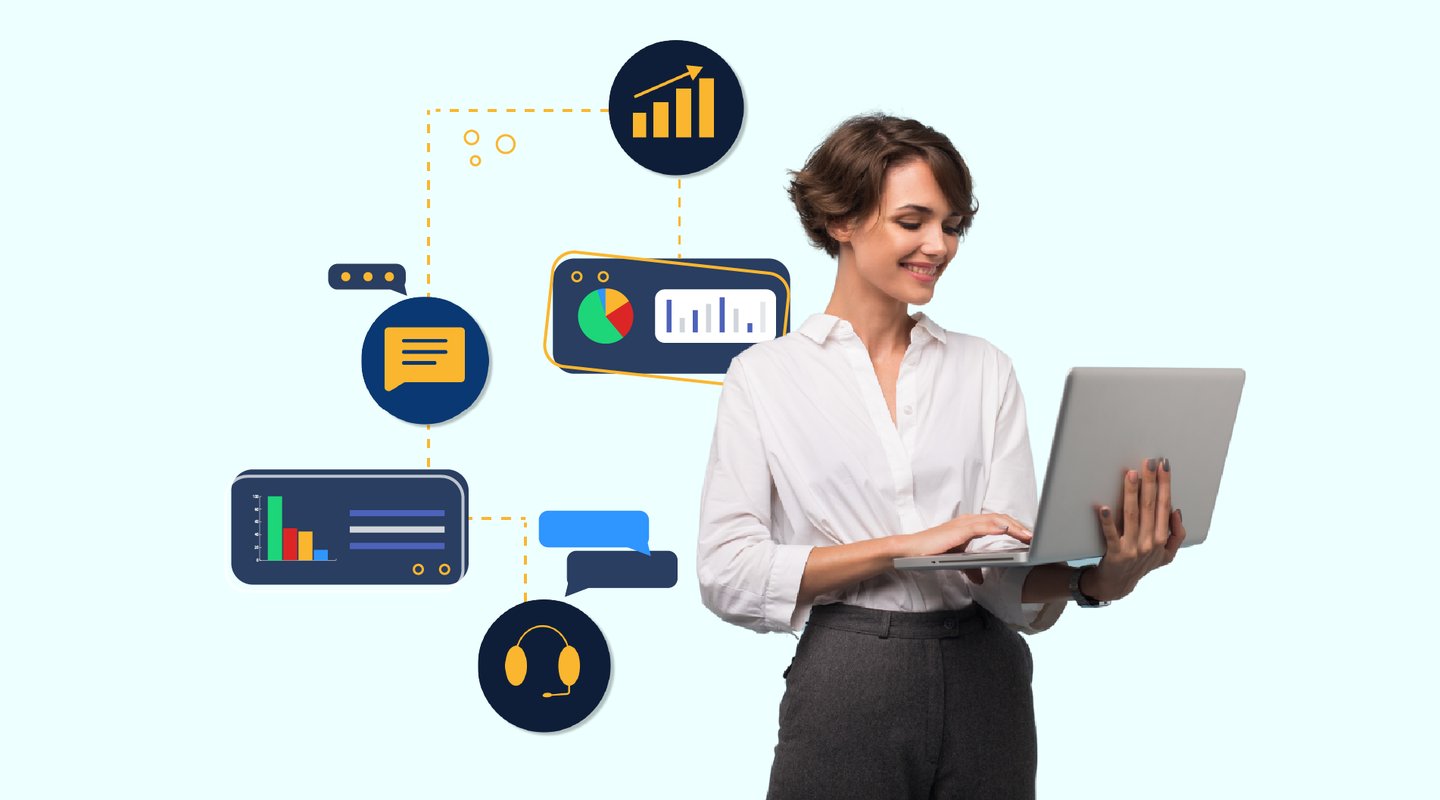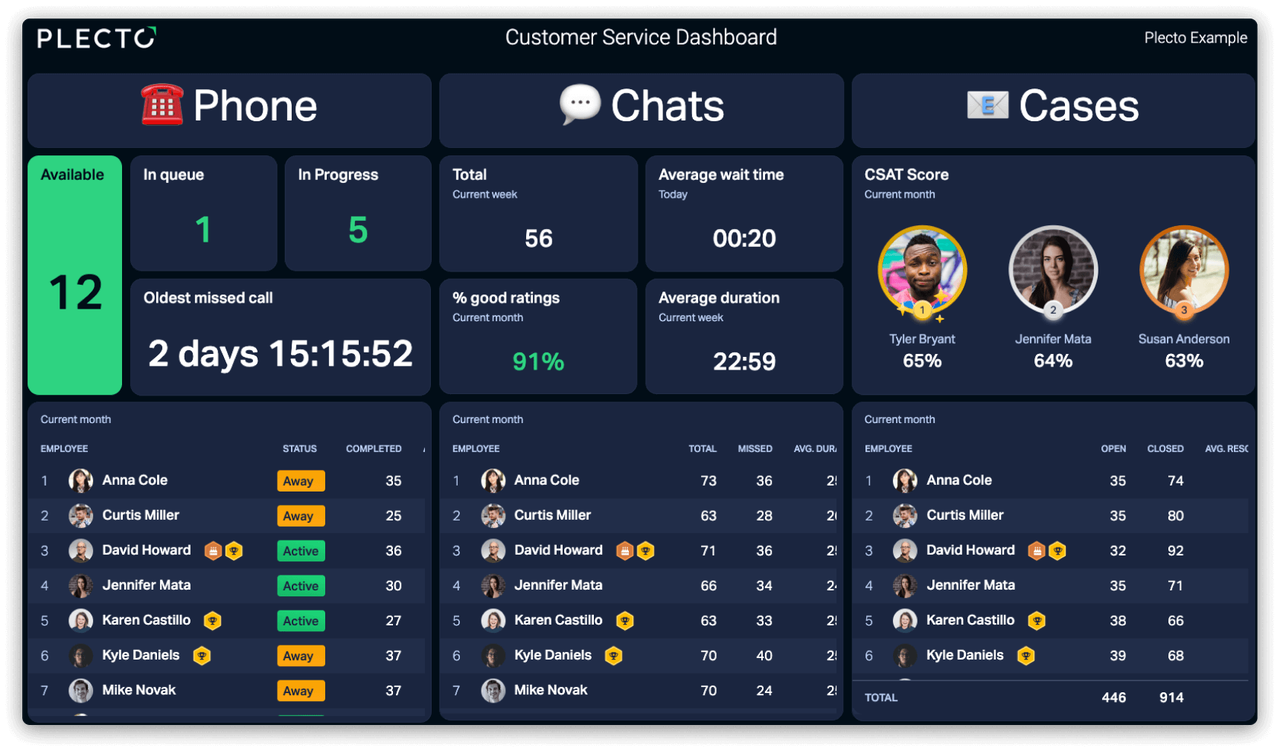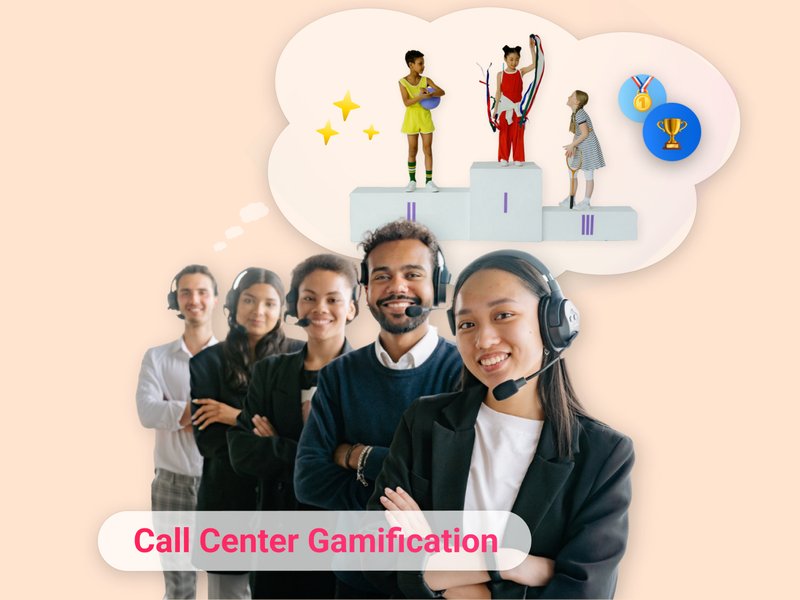Quality customer service begins at the first step in the sales journey. However, it ultimately hinges on a company’s ongoing ability to resolve issues quickly and effectively – and B2B companies face particularly high stakes when it comes to getting it right.
This article will help you understand why stellar B2B customer service matters, how the recent pandemic has changed the customer service landscape, and how to embrace five trends shaping B2B customer service in 2024.
Why does high-quality B2B customer service matter?
The stakes are high for B2B customers and the companies they do business with when considering the quality of customer service delivered. B2B customers rely on products and services to keep their businesses running smoothly, and are willing to pay up to 30% more for a better customer experience.
For companies that provide B2B products and services, one B2B transaction can equal dozens of B2C sales, and losing one B2B customer can take a noticeable bite out of revenue. While B2B customers can generate significantly more revenue vs. private customers, they also require more effort. ‘B2B customer service’ includes every interaction a customer has with a business from the time they enter the sales funnel until the day they stop doing business with the company – a day that will hopefully never come.
B2B decision-makers are also B2C customers in their private lives, and those experiences shape their expectations. 82% of corporate buyers expect the same experience regardless of whether they’re buying as a B2C or B2B customer, yet only 27% feel that companies provide an excellent overall B2B experience. Two-thirds of customers surveyed say they’ve switched suppliers to get B2C-level service.

It seems simple… just create a single customer-centric experience. Not so fast. While B2B customers expect their experience to mirror that of their B2C transactions, they’re a horse of a different color in a customer service sense.
While some B2B customers buy things like keyboards and pens, many B2B purchases are more complex – like software – where the resolution is often more elaborate than a simple return process. These purchases can affect many employees’ abilities to do their jobs efficiently while costing the customer significant sums in terms of lost revenue and productivity. Because of these far-reaching effects, B2B customer service becomes crucial because how a company responds and how efficiently they resolve urgent support tickets and issues will determine whether or not it can retain its B2B customers over the long haul.
In B2B transactions, customer service requests are less likely to be one-offs and involve ongoing relationships with multiple stakeholders. An effective B2B customer service strategy means investing in suitable customer service tools, finding ways to add value for customers, and anticipating customers’ needs and expectations to respond efficiently. Companies that get it right enjoy improved customer retention rates, which means significant savings on customer acquisition costs.
How has COVID changed B2B customer service?
The recent pandemic has undoubtedly made permanent changes to the future of customer service. 71% of customer service leaders and decision-makers believe COVID will have long-term implications for how they approach customer service and support. A couple of years ago, most B2B transactions happened offline, but worldwide lockdowns brought most B2B sales and customer service online – with customers in no rush to let go of that convenience. Today’s B2B customers expect B2C-like customer experiences with streamlined purchasing and service flows optimized for various devices.
Forrester reports that telephone was customers’ preferred pre-COVID support channel, followed by email and in-person. Two years later, messenger-based support has reportedly moved from fifth to second place as the most-used support channel, and 55% of customer service teams report increased customer preference for interacting over digital channels. According to research published by Acumen, 45% of customers are more likely to use self-service support tools vs. before COVID.
An NBC survey found that 75% of customers feel customer service worsened during COVID. At the same time, research shows that customer service expectations are at an all-time high:
- 58% of customers say their customer service expectations are higher than a year ago.
- 53% of support teams have seen an increase in support inquiries post-COVID.
- 93% of customers are more likely to repurchase from companies with exceptional customer service.
- More than half of customers say they’d stop doing business with a company after just one negative experience.
This has meant strategy shifts and innovations – and some of these changes have become industry standard in just over two years.
5 B2B Customer Service Trends Shaping 2024
As the world grapples with the AI revolution, here are five crucial B2B customer service trends that are shaping 2024:
1) Highly Personalized Customer Service
In the B2B space, it’s common to interact with multiple stakeholders from different areas. It’s also common for revenue to vary broadly between clients. Large, high-value clients know how much they spend and often expect high levels of service because of it. In response, many companies are turning toward scalable B2B customer service models that can provide highly personalized service to their biggest customers.
A scalable customer service model helps ensure customer retention while boosting customer lifetime value (CLV). In such a case, it’s important to take the time to research and understand the interests and needs of all customer stakeholders. The same goes for providing support via personal consultations with a customer service representative or customer success manager (CSM) who’s empowered to make choices and resolve issues quickly and efficiently.
70% of B2B customers say handoffs between departments are “very important” to winning their business. Check out our article for tips on aligning sales and customer service departments to achieve higher levels of service.
Some companies are using advanced analytics to identify and anticipate trends in customer service inquiries, and some have taken personalization to the next level by being proactive instead of reactive. For example, a software provider that’s identified an issue affecting several customers might send an email alerting them of the problem, its current status, steps taken to resolve it, and the expected timeline for a resolution. A subsequent email might give a status update or let customers know that the issue has been resolved. Not only is this approach great in terms of damage control, but it also gives customers the feeling that the company understands that its product is crucial to the customer’s business and that their business matters. It can also reduce support costs because the customer service team will have fewer inquiries to handle. It’s a win–win!

2) Multiple Digital Support Channels
As more digital natives enter the workforce, online customer experiences will profoundly impact companies’ long-term success. Today, 61% of B2B transactions originate online, and Forrester predicts that 17% of all B2B sales in the US will be made online by next year. Furthermore, research performed by A.T. Kearney shows that companies with well-developed digital platforms that make the best use of technology and automation generate an average of 8.1% revenue growth per year – twice that of their competitors!
"67% of consumers regularly use three or more channels to engage with a single company"
The New Rules of Customer Engagement Survey Report
Freshworks, 2019
On the customer-facing side, this means providing multiple digital support channels, which can include:
- Live chat & instant messaging apps
- Mobile apps
- SMS
- Social media platforms
- Self-service tools
But digital support tools are just as significant on the operational side, especially when 70% of customer service employees say they want to continue working from home indefinitely. To achieve highly personalized customer service, there must be synergy between everyone the customer comes into contact with. This means that each of the individuals or teams must be aware of the customer’s history – including a detailed description of their goals, motivations for purchasing, any issues they have faced, what solutions have been offered, summaries of all conversations to date, and current status of any issues faced.
A CRM system with a robust activity-logging feature can streamline the process of sharing information across teams and departments. To provide the best customer experience, combine your CRM activity with your customer service data. Take your CRM data from behind-the-scenes to front and center with a digital CX dashboard that will help motivate customer service reps by providing a consolidated overview of customer service levels and satisfaction ratings that they might not be privy to based on just CRM data alone.
Build your first dashboard.
Start your 14-day free trial today
3) Omnichannel Support
Customers are often frustrated by having to explain the same issue again and again, despite NBC reporting that 78% of customers have contacted a company multiple times to resolve an issue. Unfortunately, activity logging isn’t necessarily enough to solve this problem. Even in 2022, many companies still ran their customer service channels in silos.
Here’s an example:
A customer telephones customer service about an issue. They haven’t received a follow-up response within the promised timeframe. They initiate a live chat asking for a status update, but the customer service representative who answers the chat has no record of the customer’s earlier inquiry.
Why? Because when a telephone inquiry is logged in a different system than most of the company’s support channels are logged in, it’s easy for things to slip through the cracks due to the lack of synergy. Research shows that 78% of customers expect to be able to engage with companies on their preferred channel with 72% saying that their preferred channel varies by context.
Today’s leading B2B customer service departments have turned to omnichannel support, which tracks all customer interactions in one place, regardless of which or how many channels the customer uses – or how many stakeholders are involved. Some systems can even sync data between a company’s CRM, helpdesk software, and other systems into a “collaboration hub” for a 360-degree view of customers and their interactions with the company. Having this kind of centralization is particularly important in today’s B2B customer service environment where customers are increasingly working from multiple locations and the most convenient customer service channel can change based on venue.
Check out our article to learn how the right integrations can streamline B2B customer service operations and improve customer satisfaction.
4) AI and Automation
B2B company, ShipTime, introduced omnichannel support during COVID after call volume increased by 20% and chat volume doubled. Since then, many companies have introduced AI and automation to reduce the number of customer service inquiries requiring live support. Reduce customers’ wait times, and stress levels and burnout amongst customer service staff by automating where possible.
Here are some of the ways they’re doing that:
→ AI chatbots 🤖
Sophisticated AI chatbots can address standard customer service issues via text-based channels and voice recognition so that customer service staff can focus on more complicated matters. Since implementing chatbots, TIM Brasil has seen a 75% increase in customer inquiries resolved without involving a live support agent.
→ FAQ chatbots 💬
Companies are increasingly using FAQ chatbots to answer common questions like, “How can I change my payment method?” These can significantly accelerate response times while increasing customer satisfaction. ‘Smart’ versions of these bots can even make real-time content suggestions based on what the customer is typing.
→ Triage chatbots ✅
These bots allow customers to select key information about their inquiries from dropdown menus to help route them to the appropriate support people. An intuitive system like this minimizes data input time for the customer and improves their chances of connecting with the right person on their first support attempt.
→ VIP chatbots 👑
Customer service is especially important for companies that sell enterprise solutions to large clients. Big accounts usually have a dedicated account manager or CSM, but with telephone inquiries falling by the wayside, companies are looking into alternative ways to support these accounts with next-level service. VIP chatbots can recognize VIP customers based on their contact information and route them to dedicated customer service reps or bump them up in the queue to avoid long waiting times.
→ Self-service tools 🤳
40% of customers seeking quick answers to simple questions choose self-service tools. Knowledge bases are one of the most common and effective options. Typical knowledge base content includes information covering topics like ‘getting started’, troubleshooting, video tutorials, and FAQs.

5) Quicker Response Times and 24/7 Customer Service
The consumer shift to multi-channel digital tools reflects feelings of urgency and a desire for improved accessibility to customer service. AI, automation and B2B portals have made it possible for companies to meet customers' expectations in terms of providing instant resolutions to their issues – and on their preferred channel. With the rise of remote and hybrid work, many B2B customer service requests come outside of regular 9–5 business hours.
Want to know how you can boost motivation and productivity when you or your team is working remotely? Check out this article!
Regardless of how individual companies decide to meet the increasing demands for top-notch B2B customer service, the expectation has been set – and it’s here to stay.
Ace Your Customer Service with Dashboards, Contests + More!
Today’s customers demand customer service that consistently meets or exceeds their expectations. A customer service dashboard can help companies meet this demand by visualizing key customer service metrics in one place to improve efficiency and help teams provide outstanding service.
Plecto integrates with the most popular CRM and support systems to help visualize and track key metrics related to important B2B customer service activities, including ticketing systems, phone calls, satisfaction ratings, and more!
Plecto also includes built-in performance-driving features like leaderboards, contests, and instant notifications to spark friendly competition and help keep customer service reps striving to provide world-class service.
Try Plecto for 14 days free and stay ahead of the competition by building a top-performing customer service team, and outperform all your customer satisfaction and service goals today!




